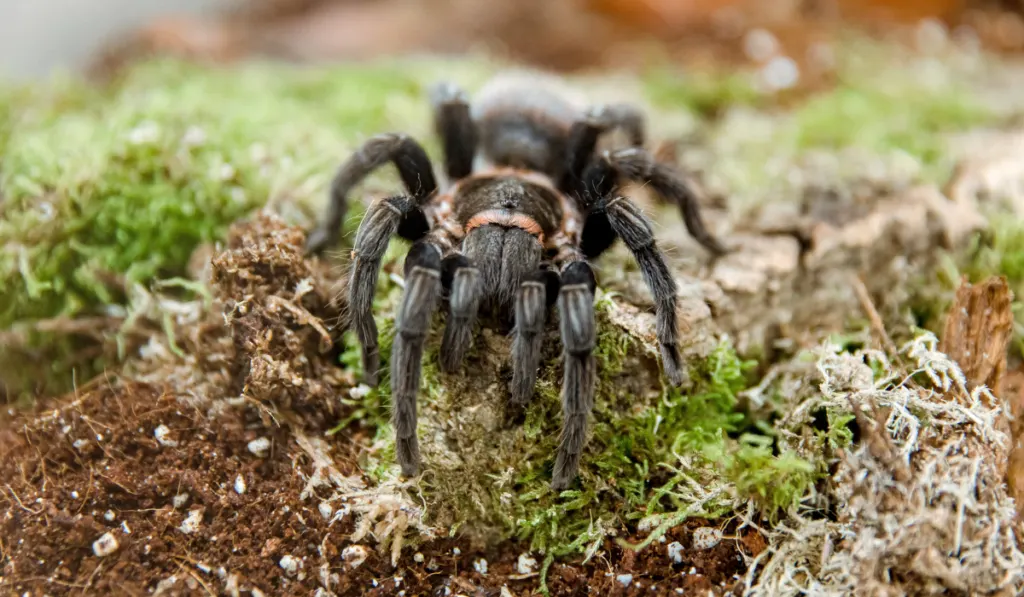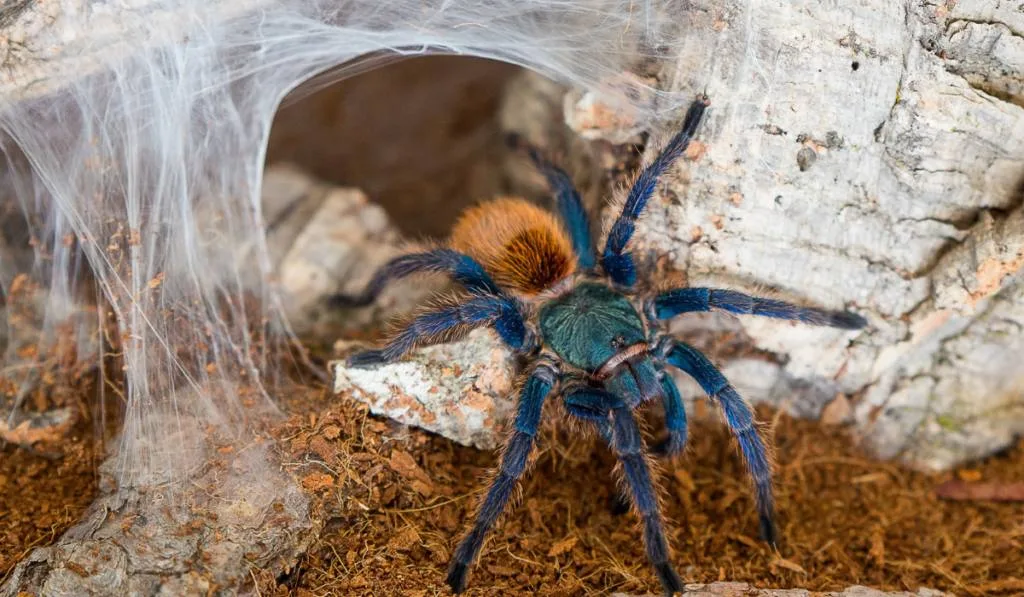Yes! Tarantulas do poop. Most of the time they have a designated spot for pooping, typically in the corner of their enclosures. Usually, their poop is white and runny, sort of like bird poop. Aside from learning about whether tarantulas poop or not, there are many other interesting facts to learn about tarantulas.
For example, there are over 850 species of tarantulas. Tarantulas are also some of the world’s largest spiders. Some people are completely petrified by them, and others see them as cute little pets to have.
If you are going to have a tarantula as a pet, it’s important to do your research and gain knowledge about how to take care of a tarantula. There are some interesting facts to be aware of. Tarantulas have interesting characteristics and ways of communicating, and knowing about them can be helpful.
Whether you have a genuine fear of spiders or if you are looking into having one as a pet, tarantulas are interesting creatures to learn about.

Table of Contents
Characteristics of Tarantulas
Tarantulas come in a variety of sizes, but all of them have eight legs and eight eyes.
Setae/ Urticating Hairs
Tarantulas also have setae, setae are stiff structures that appear to be hair-like or bristle-like. Setae are actually used as a protection mechanism, tarantulas eject bristles from their stomach area when they feel threatened.
The hairs on their body are urticating, meaning they cause a stinging sensation.
Venom
All tarantulas have venom, but some aren’t as venomous as others. Some of the people who have been bitten by a tarantula have claimed that it feels like a bee sting and didn’t affect them for a long time.
That being said, some people might have different reactions.
How Do Tarantulas Communicate?
Spiders can communicate with each other through vibratory mechanisms and pheromones, but they can also sort of communicate with us. Spiders do certain things with their bodies when they are trying to express themselves, understanding what their body language means can help us know what’s going on inside their head.
Most of the time tarantulas are very calm and docile, which is one of the reasons why they are becoming such a popular pet. The number one thing you are going to want to look out for when it comes to the body language of a tarantula is the stance they are in.
For example, if they start to stand up on their back legs that means that they are trying to warn you to stay away. When they stand on their back legs they are basically trying to show you what they’ve got: fangs.

Tarantula Species to Have as a Pet
There are so many different species of tarantulas and knowing what they are like will be helpful for finding one you are most comfortable having as a pet. Some tarantulas are friendly, some are aggressive and some are so calm you might not even notice they are there.
With that being said, there are pros and cons of each type of tarantula, these are just some of the most common ones people choose to have as pets (not in any order).
Pink Toed Tarantulas
Pink toed tarantulas are also known as Guyana pink toe, South American pink toe, and or Avicularia avicularia. Pink toed tarantulas are mostly brown or black but (and who would have thought) have a pinkish color on the ends of their legs.
Many of these tarantulas are bred in captivity, but they are native to Costa Vida, Brazil, and the southern Caribbean. Pink-toed tarantulas can be pretty docile and low maintenance. They have the ability to live in captivity for up to 10 years.
Arizona Blonde Desert Tarantulas
The Arizona blonde desert tarantula is also called western desert tarantulas or Mexican blonde tarantula. The Arizona blonde desert tarantulas can live up to 30 years.
More often than not the females are going to always be tan. The males on the other hand are going to have black legs with a red stomach area. These tarantulas like to burrow during the day. The females and males are very different, the females are bigger and live longer, whereas the males are the opposite.
Brazilian Black Tarantula
The Brazilian black tarantulas are usually bought because of their aesthetically appealing nature. They are gorgeous shiny solid black spiders about eight inches wide.
Like the Arizona blonde desert tarantula, females outlive the male tarantulas. Females can live up to 20 years and males only up to eight. It can be hard to tell the females and males apart, the only difference is, males have a hook behind one of their legs toward the front. Brazilian black tarantulas are also very docile, they move around pretty slowly.
An interesting thing to note about them is, they are very cannibalistic so be careful to avoid keeping two together for too long!

Other Cool Facts
The goliath bird-eating tarantulas are the largest tarantulas in the world, typically their body is around 5 inches and their leg span is roughly 11 inches. That’s about the same size as a football!
The spruce-fir moss spider is classified as a tarantula and is the smallest of its kind. They are typically 0.15 inches which is smaller than the size of a Tic-Tac. Spruce-fir spiders were rare to begin with, usually only found in peaks above 5,300 feet, but they are now going extinct.
All tarantulas go through a phase where they shed their skin, called molting. They usually molt a lot more often when they are younger. They still molt when they are adults, just not as much as they did when they were young.
Conclusion
If you choose to own a tarantula, just be aware of the fact that they do indeed poop! Tarantulas can be easy pets to take care of, just make sure you know how to care for one before you buy it.
They are very simple to manage, and they are incredibly interesting creatures. Good luck on your tarantula-finding journey!
